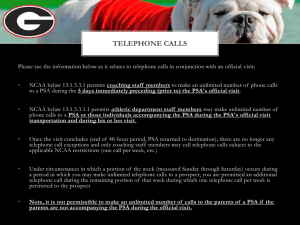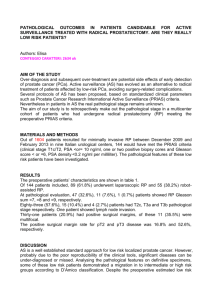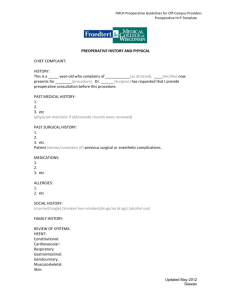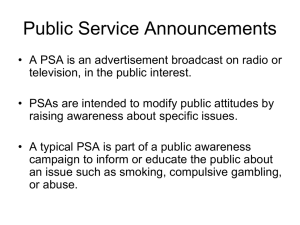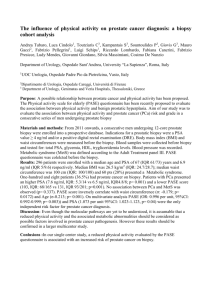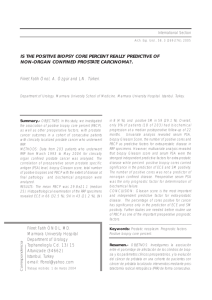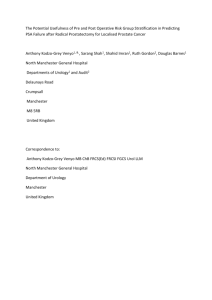Analysis of the clinical parameters commonly used to choose for a
advertisement
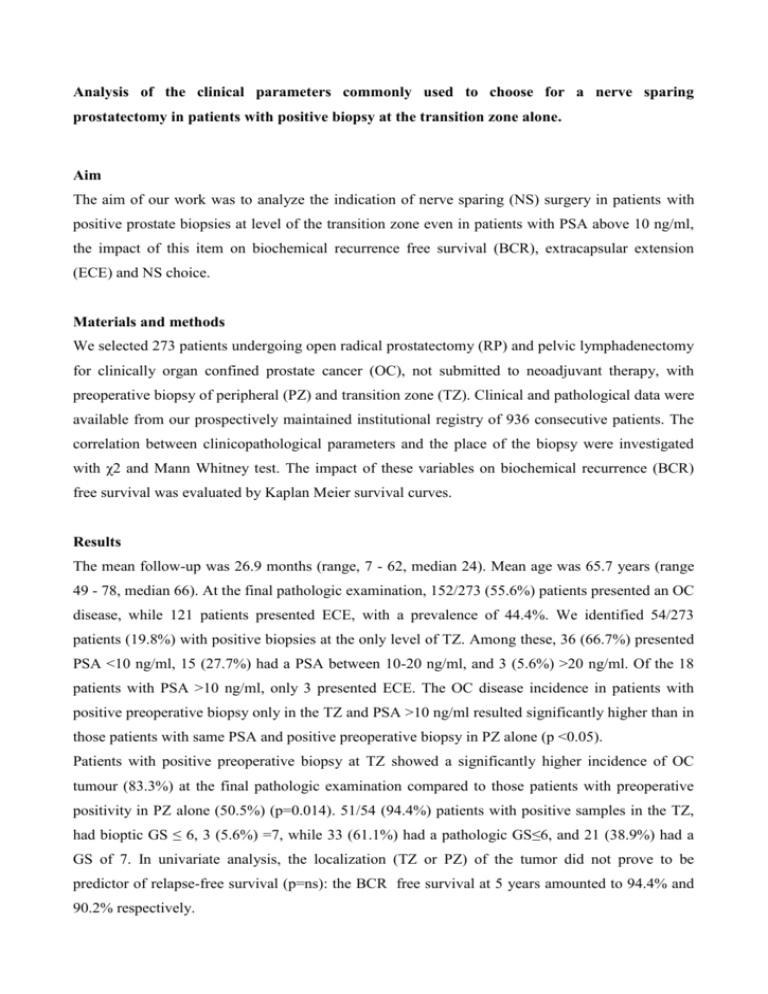
Analysis of the clinical parameters commonly used to choose for a nerve sparing prostatectomy in patients with positive biopsy at the transition zone alone. Aim The aim of our work was to analyze the indication of nerve sparing (NS) surgery in patients with positive prostate biopsies at level of the transition zone even in patients with PSA above 10 ng/ml, the impact of this item on biochemical recurrence free survival (BCR), extracapsular extension (ECE) and NS choice. Materials and methods We selected 273 patients undergoing open radical prostatectomy (RP) and pelvic lymphadenectomy for clinically organ confined prostate cancer (OC), not submitted to neoadjuvant therapy, with preoperative biopsy of peripheral (PZ) and transition zone (TZ). Clinical and pathological data were available from our prospectively maintained institutional registry of 936 consecutive patients. The correlation between clinicopathological parameters and the place of the biopsy were investigated with χ2 and Mann Whitney test. The impact of these variables on biochemical recurrence (BCR) free survival was evaluated by Kaplan Meier survival curves. Results The mean follow-up was 26.9 months (range, 7 - 62, median 24). Mean age was 65.7 years (range 49 - 78, median 66). At the final pathologic examination, 152/273 (55.6%) patients presented an OC disease, while 121 patients presented ECE, with a prevalence of 44.4%. We identified 54/273 patients (19.8%) with positive biopsies at the only level of TZ. Among these, 36 (66.7%) presented PSA <10 ng/ml, 15 (27.7%) had a PSA between 10-20 ng/ml, and 3 (5.6%) >20 ng/ml. Of the 18 patients with PSA >10 ng/ml, only 3 presented ECE. The OC disease incidence in patients with positive preoperative biopsy only in the TZ and PSA >10 ng/ml resulted significantly higher than in those patients with same PSA and positive preoperative biopsy in PZ alone (p <0.05). Patients with positive preoperative biopsy at TZ showed a significantly higher incidence of OC tumour (83.3%) at the final pathologic examination compared to those patients with preoperative positivity in PZ alone (50.5%) (p=0.014). 51/54 (94.4%) patients with positive samples in the TZ, had bioptic GS ≤ 6, 3 (5.6%) =7, while 33 (61.1%) had a pathologic GS≤6, and 21 (38.9%) had a GS of 7. In univariate analysis, the localization (TZ or PZ) of the tumor did not prove to be predictor of relapse-free survival (p=ns): the BCR free survival at 5 years amounted to 94.4% and 90.2% respectively. NS tecnique was performed in 33/54 (61.1%) patients with positive preoperative biopsy at TZ, and they were all bilateral NSRP. Among them, 12 patients had a preoperative PSA 10-20 ng/ml. 9/12 (75%) presented GS 6 and pT2N0 disease, and we didn’t find positive surgical margins at all. Discussion Our records show that tumors diagnosed in the transition zone alone are associated with a lower risk of extracapsular esxtension after radical prostatectomy. In particular, even with PSA > 10 ng/ml, the probability of organ confined disease remains significantly higher than in patients with positivity of the peripheral zone alone. Conclusions This data should be assessed in order to extend the possibility of a nerve sparing surgery in patients with positive bioptic cores only in the transition zone and PSA 10 - 20 ng/ml.

